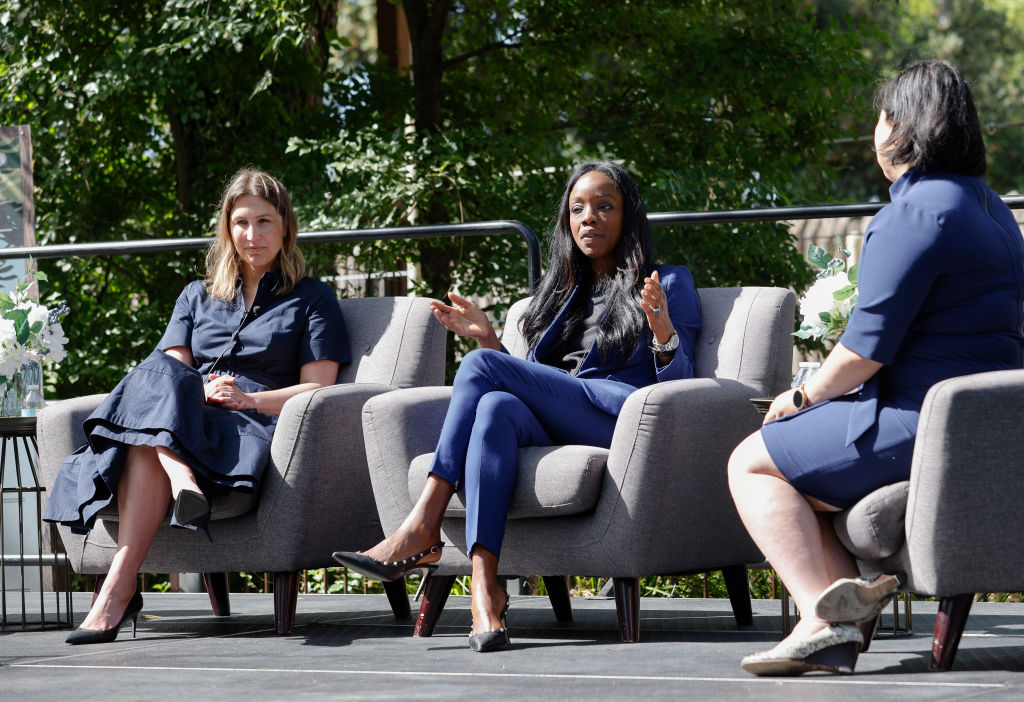Increases To The Child Care And Development Block Grant Were Helpful, But Consistent Funding Is Needed

A class at Little Flowers Early Childhood and Development Center located in the Sandtown-Winchester neighborhood of Baltimore, Maryland, on January 11, 2021. | Source: The Washington Post / Getty
No family should be forced to compromise their child’s safety and well-being because they do not have affordable care. And no employer should wonder whether their employees will show up due to gaps in the child care system. But it will take all of us to make these principles a reality. That is why I appreciate Congress allocating more money to the Child Care and Development Block Grant (CCDBG).
The CCDBG offers support for families with low incomes who, without assistance, would likely be unable to afford their current child care arrangements. They would be forced to reduce their time working or drop out of the workforce altogether, scenarios that would adversely impact their ability to care for their families. For instance, due to limited federal funding, the program was only able to serve 18 percent of eligible children in 2020. That means that care was inaccessible for over 80 percent of families. If families don’t receive the care they need, they cannot work and contribute to local economies. But if children don’t receive the early childhood education they need, they will be ill-prepared to enter school, meet social and emotional metrics, and thrive. In other words, everyone suffers when child care is out of reach.
In addition to supporting more families, the CCDBG will also help providers by decreasing overhead costs. The extra funding will allow providers to be compensated for enrollment versus attendance. Attendance varies but providers need enough funding to sustain a set number of workers to open all their classrooms and serve families. Most child care providers have the capacity to take more children, but can only do so with consistent funding. We often hear about the “child care shortage.” The shortage is not a dearth of available spots, but rather a shortage of staff. Consistent funding can alleviate this problem.
In passing the Consolidated Appropriations Act of 2024 into law, Congress boosted allocations for fiscal year (FY) 2024 which led to an increase of $725 million in discretionary funds for the CCDBG. This was in addition to a smaller increase for Head Start and funding for other important child care and early education programs such as Parts B and C of the Individuals with Disabilities Education Act. These funds will enable more families to access care, and more early childhood providers keep their doors open. But this adjustment is the floor and not the ceiling in terms of what must be done to make child care more accessible and affordable for more families. No one should feel comfortable sitting on their laurels and applauding themselves for a job well done.
During the pandemic, Congress set aside money to help families access care, and to help providers keep their doors open. But pandemic-related funding expired in September 2023, the pain of which has been acutely felt throughout the entire child care ecosystem (children, families, child care educators, child care center operators). And, what’s worse is while some of these funds were intended specifically to stabilize child care, the manner in which Alabama distributed certain funds, as income versus a more flexible contribution, has created a tax burden on many providers, thus worsening their overall financial condition. Some providers now must pay over $100,000 in tax debt. Additionally, Alabama’s time-limited policy approach versus an equity-focused one, meaning that measures were taken to implement certain pandemic-related funding until it runs out or the deadline is met, signals no intention towards implementing a sustained, long-term investment in its child care system. An equity-focused policy approach would ensure state-supported funding that would properly sustain Alabama’s child care industry, and not in a way where providers are made to jump through numerous hoops that often require additional staffing support they simply do not have and cannot afford, just to get additional funding, based on a five-star rating system.
While recent changes to the CCDBG are important, the new budget allocation came after the expiration of the pandemic Child Care Stabilization Grant, which provided $24 billion to states over three years. September 2024 will therefore mark one year since pandemic-era funding for child care ended. It will also mark the end of the supplemental CCDBG funding from the American Rescue Plan Act. For these reasons and so many more, Alabama officials can’t celebrate recent changes without developing a comprehensive plan to make care accessible, affordable, and sustainable. Nor should state leaders wait for Congress to address this monumental challenge. They have a responsibility to set aside funding to prevent the child care funding cliff that will devastate children, families and providers. This is not only good for families and providers, it’s good for businesses too.
As a nation, we should be striving for accessible, quality child care. But accessible, quality child care can only happen when legislative leaders at the state and federal levels see it as an imperative for well-functioning communities. For instance, there is a set funding formula for K-12 education, but no such formula exists for birth through kindergarten. While the current funding is an answer to prayer – as the Child Care and Development Block Grant will bring care into reach for far more families – it is one step in a long struggle.
Why this matters.
I want to be clear that the annual appropriations process is an important opportunity to increase federal investments in programs that address societal needs. And while we encourage the federal government to continue doing the right thing for children and families, our state has a responsibility to act as well. In a time of rising inflation and lower wages, the state has a unique responsibility to care for the most vulnerable members of our communities; children. This work cannot wait.
Yes, the recent allocations are helpful, but our advocacy is far from over. The state’s work is just beginning.
Lenice Emanuel is the executive director of the Alabama Institute for Social Justice and a Raising Child Care Fund grantee.
SEE ALSO:
The post Increases To The Child Care And Development Block Grant Were Helpful, But Consistent Funding Is Needed appeared first on NewsOne.





